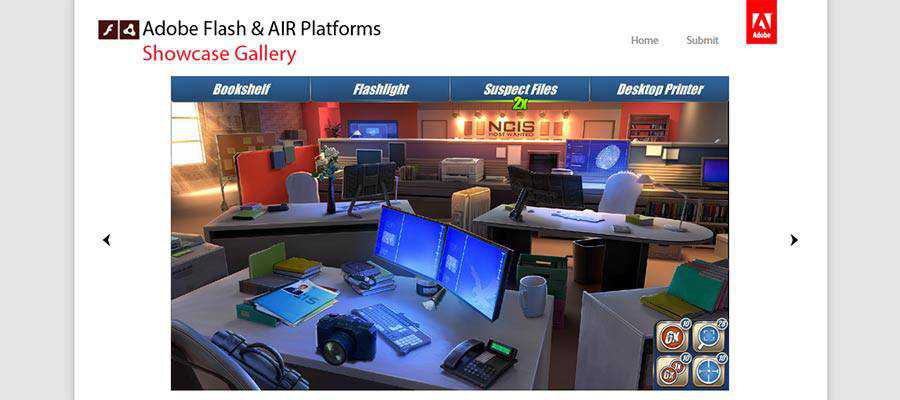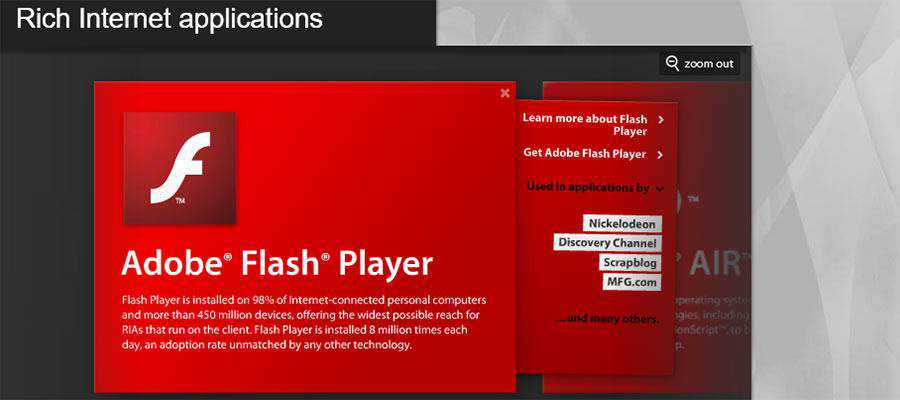We’ve known it was coming for a long time – we just didn’t know exactly when. Now, we have a date. Adobe announced that its Flash Player will no longer be distributed or updated after December 31, 2020.
Of course, development around this multimedia platform has been essentially dead for years. Adobe had even renamed its former Flash Professional development tool to Adobe Animate to show that it’s moved on to bigger and better technologies.
Still, Flash has had a remarkable lifespan on the web. Here’s a look back at what it has meant for web designers and web technology in general.
Bringing Movement and Sound to the Web
To truly understand the importance of Flash, you have to travel back in time to the mid-1990s. The worldwide web was just becoming a part of the mainstream. Internet providers began offering “unlimited” access plans and computers were becoming a staple among home appliances.
Websites in those days were quite static and often text-based. That’s a good thing because connection speeds were lousy. For example, downloading a 1MB file over a (common at the time) 14.4Kbps modem would take nearly 10 minutes!
But as demand for internet access grew, so did access to somewhat faster connections. With that, an effort began to bring multimedia content to web browsers. Flash, and its precursor/companion Shockwave, were a major part of that technological landscape.
By the summer of 1997, original owner Macromedia released Flash Player 2. It was a browser plugin that had to be downloaded and installed on the user’s machine. With the plugin activated, users could then view basic multimedia presentations.
While the Flash Player’s performance was hindered by slow connections, the creaky hardware of the time and its own share of bugs – the fact that any sort of multimedia was available to everyday users was a breakthrough.
Over the next few years, we started to see more and better Flash content. Things like interactive games and video were starting to become doable – even on basic websites.

Flash Video Makes Waves
Perhaps the crowning moment of the platform was the advent of Flash Video. The container format, released in 2002, made it easy to convert old school AVI and QuickTime files into something a bit more bandwidth-conscious – which the web desperately needed.
Prior to that, web users were typically treated to “postage stamp” sized videos that weren’t all that immersive. Flash Video, along with the spread of broadband, made watching online a more pleasurable experience.
In addition, the ability of Flash developers to create a custom-skinned media player also brought a consistent user experience across browsers and operating systems. Immersive UIs were now more possible than ever.
The massive popularity of Flash Video also meant that users had plenty of reasons to keep using the Flash Player. YouTube had adopted the format, which was a huge deal. In fact, the Google-owned property kept aboard the Flash train until finally switching to HTML5 video back in 2015.

Good Times Don’t Last Forever
Flash certainly had its share of successes. But perhaps its biggest impact was completely unintentional. The drawbacks of the proprietary browser add-on helped to get the industry thinking about web standards.
The prevalence of Flash made us ask questions. Should the creation and consumption of multimedia be confined to a single tool or platform? Is there a way to make animation, video and sound playback capabilities built into every modern browser – allowing users to avoid plugins?
As great as Flash was, it wasn’t perfect. There were security concerns that heaped onto already vulnerable browsers and operating systems. Performance issues and bugs were also commonplace. So much so that Steve Jobs famously declared that the platform wouldn’t have a place on iOS devices.
The lack of support on the mobile web, along with the push of HTML5’s multimedia capabilities, signaled the beginning of the end. Yet, it’s fair to wonder if all of this progress would have happened without Flash having been such a popular platform.
Web standards were being called for in other areas. And maybe it was only a matter of time before they took hold. But one can make the argument that Flash accelerated the creation and adoption of open standards. The web is clearly better for it.

The Legacy
Very few technologies have the ability to stick around as long as Flash. But looking back, the appeal seems simple. It was so widely adopted because it was genuinely useful.
Flash came to the web at a time when the thought of rich media experiences online seemed like a pipe dream. Neither user hardware nor bandwidth infrastructure were powerful enough early on. Yet, it still managed to provide a software-based solution – however uneven the experience was in those days.
Eventually, hardware and connection speeds caught up. And the demand for multimedia content grew along with it. This led to the realization that open standards were needed. We now expect things like animation, audio, and video to work across browsers, operating systems, and devices.
This is not something easily done with a proprietary platform. Thus, there is no longer a place in the market for Flash. It served us well before standards were in place, then moved aside afterwards. But the impact it made on web designers, content creators and end-users should not be forgotten.
Related Topics
Top